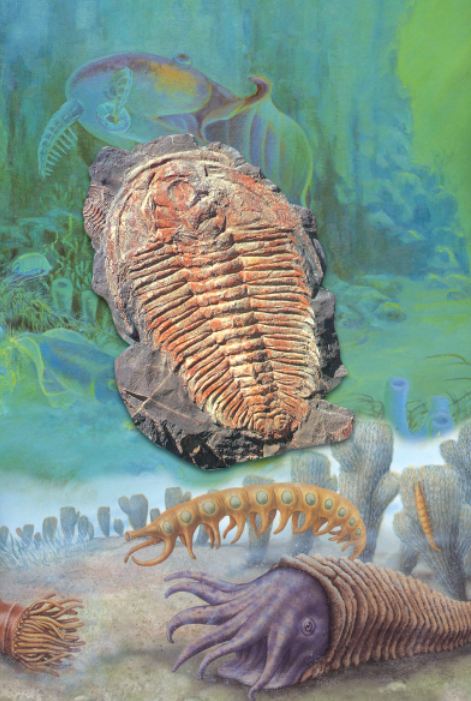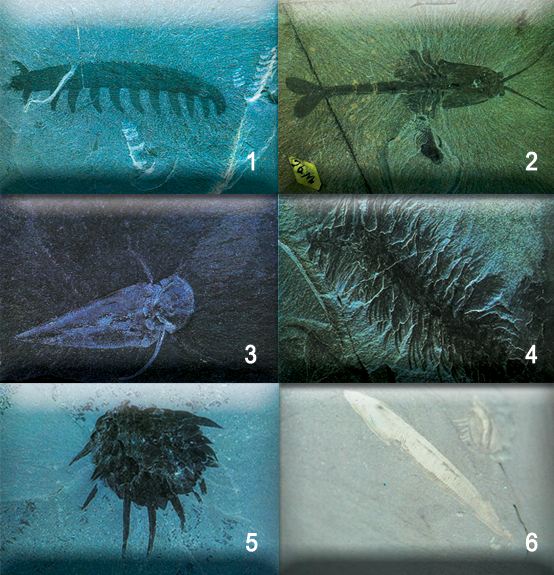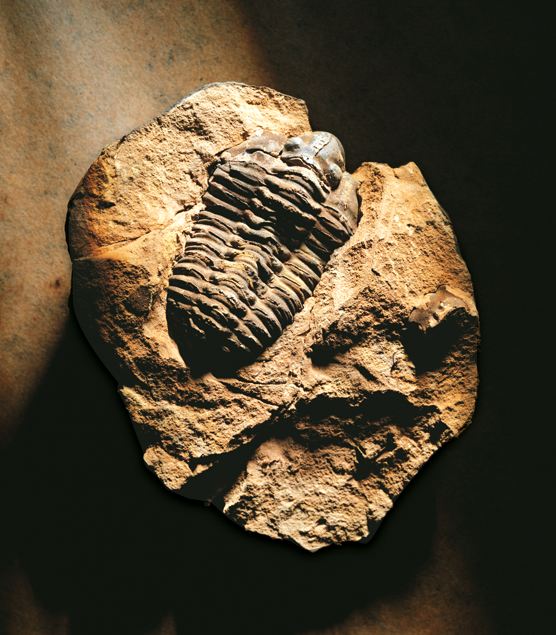Darwin suggested that living things are descended from a single common ancestor and gradually became differentiated from one another. If that is really the case, then at the very beginning, very simple—and similar—living things should have emerged. Again according to the same claim, the way that species gradually grew apart and distinct from one another, and the increase in their complexity, should have taken place over a very long period of time.
In short, according to Darwinism, any chart of evolution should resemble a tree, springing from a single root but later dividing up into separate, increasingly distant branches. Indeed, that hypothesis is insistently emphasized in Darwinist sources, and the image of the tree of life is frequently employed. According to this tree of life metaphor, all phyla—the basic classificatory units that categorize living things according to their bodily plans—should also have emerged gradually.
According to Darwinism, smaller and simpler species should have appeared first and given rise to a phylum over the course of time. Other phyla should very gradually, by a process of minute changes, eventually emerge. According to this hypothesis, there must have been a gradual increase in the number of animal phyla.
However, the fossil record conclusively demonstrates that these assumptions are incorrect. Contrary to evolutionist claims, members of the animal kingdom have been very different from one another and very complex ever since they first appeared. All the phyla known today—and others, as well—appeared on Earth at the same time, during the geological era now known as the Cambrian Period.
 |
| A 545-million-year-old trilobite fossil |
This period, when all presently known animal phyla emerged, is a geological era that lasted about 65 million years and took place between 570 and 505 million years ago. Yet the period in which just about all the known phyla appeared is a much smaller interval within the Cambrian Period itself, and is calculated to have lasted no more than 10 million years. In geological terms, that is a very brief time indeed!
The sudden emergence of life, in all its variety and with all its different bodily structures within such a short space of time, runs completely contrary to Darwinism’s expectations. The way that a number of the phyla that emerged during the Cambrian subsequently became extinct, along with the failure of any new phyla to emerge, reinforces this contradiction. Life did not increasingly broaden and assume greater variety, as evolutionists would have us believe. Rather, it began in many different forms and increasingly narrowed down.
One of the world’s most prominent critics of Darwinism, Professor Philip Johnson of University of California, describes these events as being in clear contradiction of Darwinism:
Darwinian theory predicts a “cone of increasing diversity,” as the first living organism, or first animal species, gradually and continually diversifies to create the various levels of the taxonomic order. The animal fossil record more resembles such a cone turned upside down, with the phyla present at the start and thereafter decreasing.10
 |
| The Burgess Shale fossil bed region in the Canadian province of British Columbia 1: A velvet caterpillar 2:A shrimp-like trilobite 3:A hyolithid 4:A hard-spined larva 5:A hairy larva 6:A batrak-like organism |
As Johnson points out, far from phyla emerging in stages, all of them came into being suddenly, and some even became extinct during the periods which followed. In the earlier Precambrian Period, there were only three phyla, all consisting of single-celled and simple multi-celled life forms. In the Cambrian Period, on the other hand, 60 to 100 different animal phyla suddenly emerged. A number of these became extinct in the period which followed, with only a few of these phyla surviving down to the present day.
Science journalist Roger Lewin refers to this extraordinary situation, which completely cuts the ground from under the feet of all of Darwinism’s regarding the history of life:
Described recently as “the most important evolutionary event during the entire history of the Metazoa,” the Cambrian explosion established virtually all the major animal body forms—Bauplane or phyla—that would exist thereafter, including many that were “weeded out” and became extinct. Compared with the 30 or so extant phyla, some people estimate that the Cambrian explosion may have generated as many as 100.11
Professor emeritus of integrative biology James W. Valentine, the paleontologists Stanley Awramik, Philip W. Signor, and Peter Sadler make this comment about the Cambrian explosion:
Taxa recognized as orders during the [Precambrian-Cambrian] transition chiefly appear without connection to an ancestral clade via a fossil intermediate. This situation is in fact true of most invertebrate orders during the remaining Phanerozoic as well. There are no chains of taxa leading gradually from an ancestral condition to the new ordinal body type.12
Darwin was aware of the rich variety of life that suddenly emerged in the Cambrian. Even if not so clearly as it is today, the extraordinary situation in the Cambrian Period was already realized, and Darwin recognized this as a major difficulty confronting his theory. As he wrote in On the Origin of Species:
There is another difficulty, which is much more serious. I allude to the manner in which species belonging to several of the main divisions of the animal kingdom suddenly appear in the lowest known [Cambrian-age] fossiliferous rocks.13
Darwin regarded the Precambrian Period as the only way of accounting—from the evolution point of view—for the living things that suddenly emerged immediately thereafter, during the Cambrian. If there had been a large number of very different and complex living groups in the Precambrian, then he would claim that these were the ancestors of the living species in the Cambrian. Darwin said,
Consequently, if my theory be true, it is indisputable that before the lowest Silurian stratum was deposited, long periods elapsed, as long as, or probably far longer than, the whole interval from the Silurian age to the present day; and that during these vast, yet quite unknown, periods of time, the world swarmed with living creatures.14
In the face of the possibility that no trace of a living thing was found in the Precambrian, he proposed that the fossil record was insufficient, and that the extreme heat and pressure of the overlying strata had destroyed the oldest fossils.15
Relying on inadequate studies, Darwin set out excuses like this in his On the Origin of Species. In our time, however, the fossil record and geological strata have been sufficiently studied, and fossil beds older than the Cambrian have been found and examined. The present state of knowledge about the Precambrian is much more reliable than what was possessed by Darwin.
Paleontologists have discovered Cambrian rocks with rich, well-preserved fossil beds in Wales, Canada, Greenland and China. Rather than resolving Darwin’s dilemma, the relatively large quantities of Cambrian and Precambrian fossils have added entirely new ones. To such an extent, in fact, that the majority of paleontologists, even including prominent evolutionists, are convinced that the major animal groups emerged during the early part of the Cambrian Period, and evidently had no predecessors.
This phenomenon began to be referred to, even in evolutionist publications, as “The Cambrian Explosion” and “The Biological Big Bang.”
Despite Darwin’s knowledge that fossils of “new” species appeared suddenly during the Cambrian Period, the full importance and scope of the matter was not realized until 1980. However, when by the paleontologists Harry B. Whittington, Derek Briggs and Simon Conway Morris re-examined fossils found in the Burgess Shale in Canada’s British Columbia, the Cambrian explosion came to light. The 1980s also saw the discovery of two new fossil regions resembling the Burgess Shale: Sirius Passet in Northern Greenland and Chengjiang in Southern China. Fossils of utterly different living things that first emerged during the Cambrian period were found in both these regions. The Chengjiang fossils were the oldest and best-preserved of these, and also contain the first vertebrates.
In its February 1999 edition, the well-known scientific publication Trends in Genetics (TIG) discussed the Burgess Shale fossil discoveries and accepted that they could not possibly be explained in terms of the theory of evolution:
It might seem odd that fossils from one small locality, no matter how exciting, should lie at the center of a fierce debate about such broad issues in evolutionary biology. The reason is that animals burst into the fossil record in astonishing profusion during the Cambrian, seemingly from nowhere. Increasingly precise radiometric dating and new fossil discoveries have only sharpened the suddenness and scope of this biological revolution. The magnitude of this change in Earth’s biota demands an explanation. Although many hypotheses have been proposed, the general consensus is that none is wholly convincing.16
These ideas, none of which “is wholly convincing,” are those of evolutionist paleontologists, who offer forced explanations to defend the theory of evolution in the face of the Cambrian explosion. However, they are unable to have these alibis accepted, even by one another.
The first excuse for the Cambrian explosion that evolutionists put forward is the claim that the fossil record is insufficient. Because of their great age, most fossils of living things from the Precambrian have not survived, they suggest—for which reason the “surviving” remains give the impression that living things emerged suddenly.
The fact is, however, that the fossil record is not deficient, as evolutionists would have us believe. Today, many strata belonging to the later part of the Precambrian and the Cambrian have been unearthed. Paleontologists have become convinced that if the ancestors of Cambrian living things had existed during the Precambrian, we would have found them by now. According to paleontologists James W. Valentine of California Universty and Douglas Erwin, of the Smithsonian Institute, the fossil record from the Cambrian period is as complete as more recent fossil strata, which also display similar features and time gaps.
Despite that, however, Valentine and Erwin arrive at the following conclusion, stating that their ancestors or transitional forms are unknown.“Explosion is real; it is too big to be masked by flaws in the fossil record.”17
In an article in February 2000, the British geologists M. J. Benton, M. A. Wills and R. Hitchin wrote that “the older fossil records are adequate to recount important events in the history of life,”18 thus announcing that there could be no question of using the insufficiency of the fossil record as an excuse.
Another excuse evolutionists employ with regard to the Cambrian explosion—that small and soft-bodied creatures left no fossils behind them—is similarly invalid. According to this reasoning, the ancestors of animal phyla are not found in the Precambrian because they were very tiny and had no hard structures, and so left no fossils behind them. Yet this is not actually the case: There are numerous fossils of soft-bodied organisms. Nearly all of the fossils in the Ediacara Hills in Australia, for example, consist of soft-bodied creatures. In his 1998 book The Crucible of Creation, Simon Conway Morris writes that “First, in the Ediacaran organisms there is no evidence for any skeletal hard parts . . . Ediacaran fossils look as if they were effectively soft-bodied.”19 The same applies to some fossils from the Cambrian Period. For instance, there are a number of fossils of soft-bodied living things in Burgess Shale. According to Conway Morris, “these remarkable fossils reveal not only their outlines but sometimes even internal organs such as the intestine or muscles.”20
 |
| An arthropod (left) and a slug-like creature (right) found in the Burgess Shale. |
To make it clear that fossilization is not that difficult a process, recall that fossil bacteria have even been found: Micro-fossils of bacteria have been discovered in sedimentary rock layers more than 3 billion years old!
In short, the evolutionary ancestors of the life forms that emerged in the Cambrian Explosion have not been found in the Precambrian Period, but not because those life forms were soft-bodied.
In conclusion, evolutionists are unable to find any excuse for the Cambrian Explosion. This sudden appearance of life on Earth proves that the theory of evolution is wrong.
The more one examines the Cambrian Explosion, the clearer becomes that grave dilemma that it represents for the theory of evolution. Recent discoveries show that almost all phyla, the basic categories of animal life, emerged suddenly during the Cambrian Period. One article, published in Science magazine in 2001, states, “The beginning of the Cambrian period, some 545 million years ago, saw the sudden appearance in the fossil record of almost all the main types of animals (phyla) that still dominate the biota today.”21
The same article also explains that for such complex and very different life forms to be explained in terms of the theory of evolution, fossil beds from earlier periods revealing a very rich and gradual development need to be found. But such a thing is out of the question: “This differential evolution and dispersal, too, must have required a previous history of the group for which there is no fossil record.”22
 |
| A trilobite: one of the complex living things found in Cambrian strata |
The scenario revealed by Cambrian Period fossils refutes the assumptions of the theory of evolution on the one hand, while on the other, constituting important evidence that living things came into being by means of conscious Creation. The evolutionist biologist Douglas Futuyama expounds on this fact:
Organisms either appeared on the earth fully developed or they did not. If they did not they must have developed from preexisting species by some process of modification. If they did appear in fully formed state, they must have been created by some omnipotent intelligence.23
As you have seen, the fossil record shows that living things did not follow a progression from the primitive to the more developed, as the theory of evolution would have us believe. Rather, living things emerged suddenly and in the most perfect state. This, in turn, constitutes proof that life came into being not by random natural processes, but by conscious Creation. Jeffrey S. Levinton, a professor of ecology and evolution from New York State University, accepts as much in an article he wrote for Scientific American magazine titled “The Big Bang of Animal Evolution.” As he says, “Therefore, something special and very mysterious—some highly creative ‘force’—existed then.”24
10 Phillip E. Johnson, “Darwinism’s Rules of Reasoning,” http://www.arn.org/docs/johnson/drr.htm ![]()
11 Roger Lewin, Science, vol. 241, 15 July 1988, p. 291. ![]()
12 James Valentine, Stanley Awramik, Philip W. Signor and Peter Sadler, “The Biological Explosion at the Precambrian-Cambrian Boundary,” Evolutionary Biology, Vol. 25, 1991, pp. 279, 281. ![]()
13 Charles Darwin, The Origin of Species, Chapter X, London: John Murray, 1859. ![]()
14 Charles Darwin, Op. cit., Chapter IX, p. 313. ![]()
16 Gregory A. Wray, “The Grand Scheme of Life,”,” review of The Crucible Creation: The Burgess Shale and the Rise of Animals by Simon Conway Morris, Trends in Genetics, February 1999, Vol. 15, no. 2. ![]()
17 James W. Valentine et al., “The Biological Explosion at the Precambrian-Cambrian Boundary,” Evolutionary Biology, Vol. 25, 1991, p. 318. ![]()
18 M. J. Benton, M. A. Wills and R. Hitchin, “Quality of the Fossil Record Through Time,” Nature, Vol. 403, 2000, pp. 534-536. ![]()
19 Simon Conway Morris, The Crucible of Creation, Oxford: Oxford University Press, 1998, p. 28. ![]()
21 Richard Fortey, “The Cambrian Explosion Exploded?,” Science, Vol. 293, no. 5529, 20 July 2001, pp. 438-439. ![]()
23 Douglas J. Futuyma, Science on Trial, New York: Pantheon Books, 1983, p. 197 (emphasis added). ![]()
24 Jeffrey S. Levinton, “The Big Bang of Animal Evolution,” Scientific American, Vol. ![]()